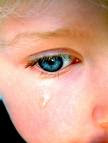 God's greatest gifts to mankind,
God's greatest gifts to mankind,Are friends who will truly care,
Who are always ready to listen,
And who are never afraid to share.
They come in compassion and love,
To hear of our joys and our fears,
And feeling our depths of emotion,
They may laugh or even shed tears.
Their friendship is very special,
Being based on unconditional trust,
Allowing us to be free and open,
To rid ourselves of all that we must.
They are there whenever we need them,
In bright sunshine or down pouring rain,
To help us with all of our problems,
Bringing peace by removing all the strain.
God's Blessings are free and abundant,
For all those who follow His way,
And our Friends are His greatest blessing,
As we Exist in this world Today.
Author: David Henkel































